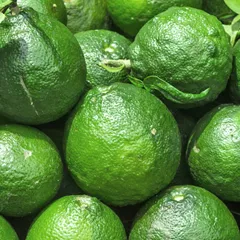Yang Excess
The information provided here is not a replacement for a doctor. You shouldn't use it for the purpose of self-diagnosing or self-medicating but rather so you can have a more informed discussion with a professional TCM practitioner.
At a glance
Preliminary reading: What is a pattern?
Diagnosis
Treatment
Common formulas: Da Cheng Qi Tang
Pathology
Yang Excess is a pattern of disharmony in Chinese Medicine.
Chinese Medicine views the human body as a complex system that tends toward harmony. A pattern of disharmony is a disorder that prevents that harmony from occurring.
Patterns aren't exactly the Chinese Medicine equivalent to Western diseases, they're rather the underlying causes behind diseases or health conditions. Here Yang Excess is thought to sometimes induce conditions such as hypertension, cholecystitis or schizophrenia (as well as fourteen others).
Diagnosing Yang Excess
Diagnosing a pattern in Chinese Medicine is no easy feat and should be left to professional practitioners. In particular one has to know how to differentiate between different types of pulses and tongue coatings, shapes and colors as well as learn to read from a long list of seemingly unrelated symptoms.
Treating Yang Excess
Herbal formulas used to treat Yang Excess



The top herbs in Da Cheng Qi Tang are Rhubarb (Da Huang), Mirabilites (Mang Xiao) and Immature Bitter Oranges (Zhi Shi)
Da Cheng Qi Tang
Source date: 220 AD
Number of ingredients: 4 herbs
Key actions: Purges Heat from the Stomach and Intestines. Relieves constipation.
Formula summary
Da Cheng Qi Tang is a 4-ingredient Chinese Medicine formula. Invented in 220 AD, it belongs to the category of formulas that purge Heat accumulation.
Besides Yang Excess, Da Cheng Qi Tang is also used to treat Yang Excess or Full Yang or Heat in Yang brightness Organs.
Related conditions
Please keep in mind that a Western Medicine condition can be caused by several Chinese Medicine patterns of disharmony and vice versa. As such a patient suffering from one of the conditions below will not necessarily be suffering from Yang Excess, it is just one pattern that's commonly associated with the condition. Click on a condition to learn what other patterns it's associated with.
Hypertension Cholecystitis Schizophrenia Appendicitis Asthma Hemorrhoids Icteric hepatitis Pancreatis Urinary stones Bacterial dysentery Encephalitis Influenza Lobar pneumonia Purulent tonsillitis Cardiopulmonary disease Enuresis Stroke
